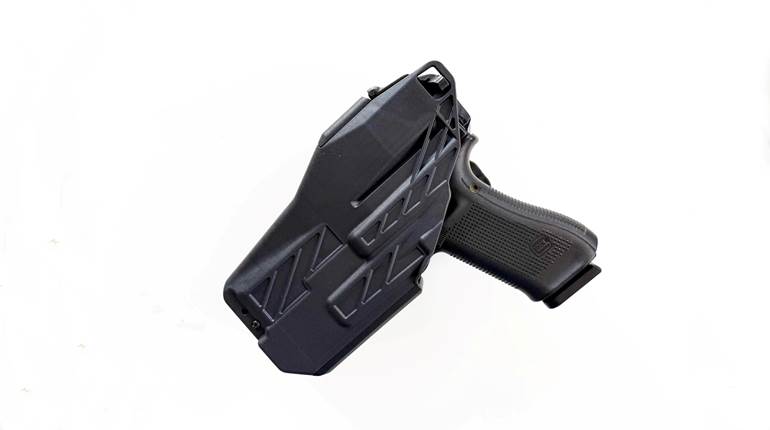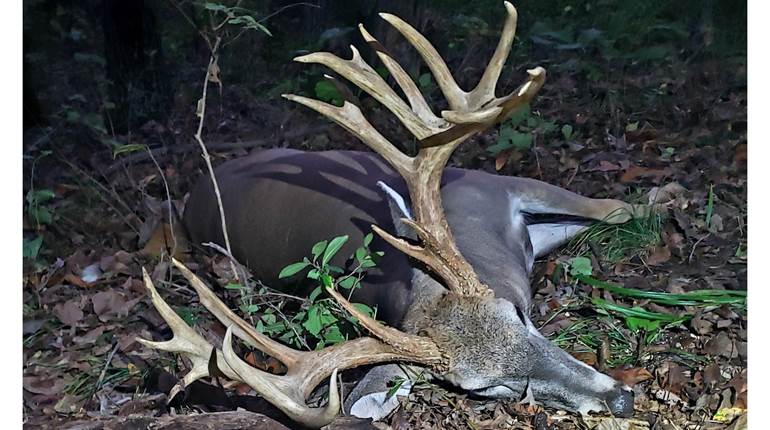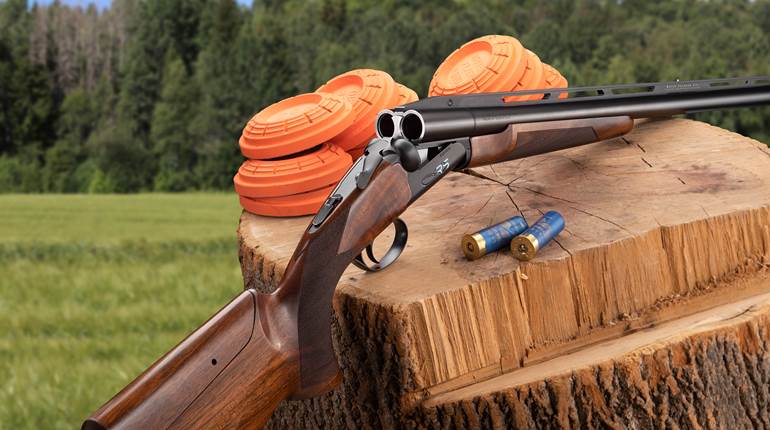
This article appeared originally in the May 28, 1914 issue of Arms And The Man, the predecessor of today's American Rifleman. To subscribe to the monthly magazine, visit NRA’s membership page.

Under this title S. N. D. North, LL. D., and Ralph N. North, offer a memoir of their ancestor, noteworthy for the painstaking care with which the archives of the War and Navy Departments have been searched for reliable data.
These two great-grandsons of Simeon North, with justifiable pride becoming interested in the achievements of their forebear in the manufacture of pistols and guns for Government use found nowhere in public form any record of his achievements.
As a contractor making pistols and rifles for the United States, Colonel North occupied a more or less permanent contractual relation with his Government for more than fifty years. At times large sums of money were advanced to him and great trust was reposed not only in his financial capacity but also upon his technical judgment and good faith. The career of Simeon North seems to be one worthy of record. He belonged to that sturdy type of American pioneer to whose efforts this strong, young country owes so much.
The book, which is well printed on excellent paper, is intrinsically interesting. There are a number of excellent illustrations from which we are privileged to reproduce a few.
The first of these is a reproduction of one of the original 500 horse pistols contracted for by the Government in 1798. This pistol was made under the first contract between the United States and Colonel North. It, as well as all others, was fully carried out to the entire satisfaction of the Ordnance Officers. It is known as the Horse Pistol of Model 1799 -1800. Flint lock; length 14-3/4 inches; length of barrel, 9 inches; caliber, .69; brass mountings.
 A top-down view of an 1820 Isaac Hull presentation pistol reads: "Voted by the General Assembly of the State of Connecticut to their fellow citizen Captain Isaac Hull."
A top-down view of an 1820 Isaac Hull presentation pistol reads: "Voted by the General Assembly of the State of Connecticut to their fellow citizen Captain Isaac Hull."
That the North factory was not limited in its operation to the severely simple arms of ordinary use is shown by our illustration of the gemlike gift pistols presented to Commodore Isaac Hull, in recognition of his “virtues, gallantry and naval skill,” by the Commonwealth of Connecticut. These pistols were authorized by a resolution of the legislature of Connecticut, passed in 1817. Two views of these exceptionally beautiful gold-mounted weapons are shown [above]. They were finished and presented to Commodore Hull in 1820.
Turning now to the longer guns, of which the North factory produced many thousands for the Government, the first North rifle is shown. This was made under contract consummated in 1823. The gun, which is, of course, flintlock, has a total length of 51-1/4 inches; length of barrel, 36 inches; caliber, .54; Government Standard Model.
The Hall rifle of familiar type to students of our military arms, was also made in considerable quantities by the North factory. There is shown a typical one of this kind made under a contract dated 1828. This rifle, also flintlock, had a length of 52-1/2 inches; length of barrel, 32-1/2 inches; depth of chamber and receiver, 2-3/8 inches; caliber, .54; Harper's Ferry Model.
 This U.S.-proofed pistol was one of the 19,374 handguns manufactured under contract by Simeon North of Middletown, Conn. Photo courtesy of NRAMuseum.org.
This U.S.-proofed pistol was one of the 19,374 handguns manufactured under contract by Simeon North of Middletown, Conn. Photo courtesy of NRAMuseum.org.
An interesting, if freakish weapon, which shows perhaps more than ordinary desire on the part of Colonel North to carve out a new way, is the multi-charge repeating rifle which came out in 1825. This gun was made to fire ten charges without reloading. It loads from the muzzle. The cartridges following each other in, until the whole ten were rammed home.
The side of the barrel is perforated by ten primer holes which are protected by thin steel covers. The lock is enclosed in a steel case and runs in a steel groove on the underside of the barrel; in firing it is pushed forward to the first charge and the primer pan filled from a chamber on the back side of the lock, holding sufficient powder to prime for the ten shots. After the first charge is fired, the lock is pulled back to the second charge, and so on until all the charges are fired. The length of gun overall is 56-3/4 inches; length of barrel, 41-3/4 inches; length of stock and forearm, which is one piece, 53-3/4 inches; caliber, .54.
The barrel is octagonal in shape for 16 inches from the breech and round from that point to the muzzle. On the lock plate is stamped "S. North, Middletown, Conn., 1825," and the same date appears on the breech of the barrel. It is very carefully made, and finely finished. Whether it was submitted for government approval we do not know, but if so, the verdict was doubtless unfavorable as none was ever made for the service. A number of the rifles were made and sold at private sale, and were probably used by sportsmen.






































